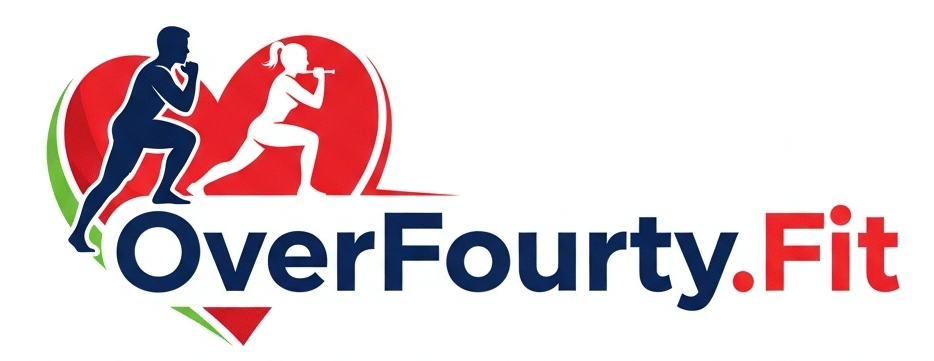Inomyalgia: Interview with a Specialist on Treatment Options
Fibromyalgia is a condition that affects millions of people worldwide, but it often goes misunderstood.
Imagine waking up every day feeling like your body has been hit by a truck—fatigue, pain, and brain fog can make even the simplest tasks feel overwhelming.
Amidst this confusion lies inomyalgia, a term that’s becoming more prominent in discussions about fibromyalgia treatment options.
In this blog post, we’ll dive deep into the complexities of fibromyalgia and explore what inomyalgia really means.
We’ll unravel its symptoms and take you through both traditional and alternative treatments available today.
Plus, we’ll feature an exclusive interview with a specialist who will share effective strategies for managing this challenging condition.
Whether you or someone close to you suffers from fibromyalgia, understanding these elements can be pivotal in taking control of daily life despite the hurdles posed by this ailment.
Join us on this journey towards better health and well-being!
What is inomyalgia?
Inomyalgia is a condition that falls under the umbrella of fibromyalgia. It’s characterized by widespread pain, fatigue, and tenderness in muscles and soft tissues. People experiencing inomyalgia often feel as though they are carrying an invisible weight.
The exact cause remains unclear, but researchers suggest it may stem from abnormal pain signaling in the brain or nervous system.
Stress, genetics, and infections can also play a role in its development.
Individuals with inomyalgia report difficulties with sleep patterns and mental clarity. Daily tasks can become overwhelming due to persistent discomfort.
It is essential for those suffering from this condition to seek proper medical advice for diagnosis and treatment options tailored to their needs.
Understanding the Symptoms of Fibromyalgia
Fibromyalgia presents a complex array of symptoms that can differ significantly from person to person. Many individuals experience widespread pain, often described as a constant dull ache.
This discomfort can shift locations and intensity throughout the day.
Fatigue is another common symptom, leaving those affected feeling drained even after a full night’s sleep.
Sleep disturbances frequently accompany this fatigue, making restorative rest elusive.
Cognitive issues, sometimes referred to as “fibro fog,” impact concentration and memory. People may struggle with simple tasks or forget details they would normally recall easily.
Additionally, fibromyalgia can lead to heightened sensitivity to touch, sound, and light.
Many report experiencing migraines or tension headaches alongside their other symptoms.
Emotional challenges are not uncommon; anxiety and depression often co-exist with fibromyalgia’s physical manifestations.
Understanding these varied symptoms is essential for managing the condition effectively.
Traditional Treatment Options for Fibromyalgia
Traditional treatment options for fibromyalgia often focus on alleviating symptoms and improving quality of life. Medications play a significant role in this approach.
Doctors may prescribe pain relievers like acetaminophen or nonsteroidal anti-inflammatory drugs (NSAIDs) to help manage discomfort.
Antidepressants, such as duloxetine or milnacipran, are also common. They target not just mood but can relieve pain as well.
Some patients respond positively to antiepileptic medications like gabapentin, which helps reduce nerve-related pain.
Physical therapy is another cornerstone of traditional treatments. Tailored exercise programs can strengthen muscles and improve flexibility while reducing fatigue.
Cognitive-behavioral therapy (CBT) is beneficial too, addressing negative thought patterns that exacerbate the condition’s impact.
Incorporating stress management techniques alongside these methods creates a holistic approach to tackling fibromyalgia’s challenges effectively.
Alternative Treatment Methods for Fibromyalgia
Alternative treatment methods for fibromyalgia are gaining popularity as individuals seek relief beyond traditional medications.
Many find solace in complementary therapies that address both physical and emotional aspects of the condition.
Acupuncture is one such technique. This ancient Chinese practice involves inserting thin needles into specific points on the body, which may help reduce pain and improve overall well-being.
Another option is mindfulness meditation. By focusing on the present moment, individuals can learn to manage stress and anxiety often associated with fibromyalgia.
Herbal remedies also play a role in alternative treatments. Ingredients like turmeric and ginger have anti-inflammatory properties that could alleviate symptoms.
Yoga combines gentle movement with breath control, promoting flexibility while reducing tension in muscles.
Many practitioners report feeling more balanced after regular sessions.
Exploring these alternatives can empower those living with fibromyalgia to discover what works best for their unique needs and lifestyles.
Interview with a Specialist on Effective Treatment Strategies
In our recent conversation with Dr. Emily Carter, a renowned fibromyalgia specialist, we delved deep into effective treatment strategies for inomyalgia.
Dr. Carter emphasized the importance of personalized care. No two patients are alike, she noted, which means treatments must be tailored to individual needs and symptoms.
She highlighted cognitive-behavioral therapy as a valuable tool. “It helps patients manage pain by changing their thought patterns,” she explained.
Medications also play a critical role. Dr. Carter mentioned that both antidepressants and anticonvulsants can provide significant relief for many sufferers of inomyalgia.
Lifestyle changes shouldn’t be overlooked either—regular exercise is essential, even if it’s just gentle movement like walking or yoga.
She encouraged open communication between patients and healthcare providers to ensure ongoing adjustments to treatment plans as needed.
How to Manage and Cope with Fibromyalgia in Daily Life
Living with inomyalgia requires a blend of strategies to navigate daily challenges. Start by establishing a consistent routine. Regular sleep patterns can significantly improve your energy levels.
Incorporating gentle exercise, such as walking or yoga, helps ease stiffness and boosts mood. Even short sessions can be beneficial; listen to your body and rest when needed.
Nutrition plays a vital role too. Focus on balanced meals rich in whole foods, while staying hydrated throughout the day.
Mindfulness practices like meditation or deep breathing exercises can reduce stress and enhance emotional resilience. These techniques allow you to manage pain more effectively.
Don’t hesitate to reach out for support—whether from friends, family, or online communities.
Sharing experiences provides comfort and understanding.
Keep track of symptoms in a journal; this practice may reveal triggers that you can address proactively.
Conclusion
Living with inomyalgia can be a challenging journey. Each day may present new hurdles that test your strength and resilience.
It’s important to seek help and explore various treatment options tailored to individual needs.
The right approach can make a world of difference, whether it’s traditional methods or alternative therapies.
Connection with others who understand the experience is invaluable. Support groups and online communities can provide comfort and shared strategies for coping.
Embracing self-care routines is essential too. Small changes in lifestyle might lead to significant improvements over time.
Remember that you’re not alone on this path. There are resources available, specialists ready to guide you, and countless individuals sharing similar struggles.
Always keep an open mind about potential solutions while navigating through daily life challenges associated with inomyalgia. Your well-being matters deeply.
FAQs
As we navigate the complexities of inomyalgia, it’s essential to address some frequently asked questions that can help clarify this condition.
What is inomyalgia and how does it differ from fibromyalgia?
Inomyalgia refers to a specific subset or variation within the broader category of fibromyalgia. While both conditions share symptoms like widespread pain and fatigue, inomyalgia may present unique challenges that require tailored treatment approaches.
What are common symptoms associated with inomyalgia?
Those living with inomyalgia often experience chronic pain, sleep disturbances, cognitive issues (sometimes referred to as “fibro fog”), and emotional struggles such as anxiety or depression. Recognizing these symptoms early can lead to more effective management strategies.
How can lifestyle changes impact the management of inomyalgia?
Lifestyle adjustments play a significant role. Regular exercise, a balanced diet rich in anti-inflammatory foods, stress-reduction techniques like yoga or meditation, and proper sleep hygiene can all contribute significantly to alleviating symptoms.
Are there any recent advancements in treating inomyaglia?
Yes! Research continues to evolve around treatment options for both fibromyalgia and its variations. New medications are being evaluated while non-pharmacological treatments such as acupuncture and cognitive-behavioral therapy show promise.
Is it possible to live normally with an diagnosis of Inomyaglia?
Absolutely! Many individuals manage their symptoms successfully through a combination of traditional medical treatments tailored by professionals alongside alternative therapies. Support groups also provide valuable community connections that foster understanding and shared experiences.
Managing life with any form of fibromyalgia requires patience. Understanding your body’s signals is key. By pursuing informed choices about care strategies—both conventional and alternative—you empower yourself on this journey toward wellness.







